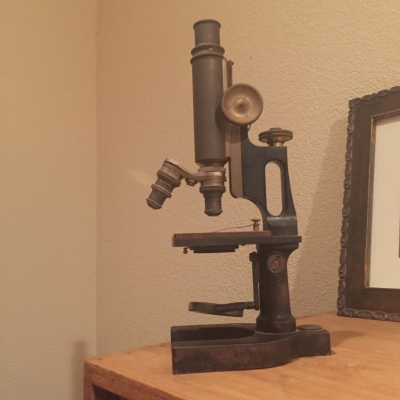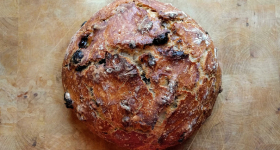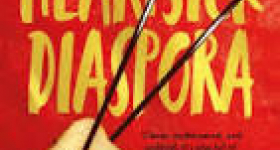“What are you?”
“I’m half Japanese.”
“And half what?”
I’ve had this conversation more times than I can count. For years, my response to that last question was simply a shrug, or “Your guess is as good as mine.”
I was raised by Japanese American adoptive parents, and I knew that my birth mother was also Nisei, or second-generation Japanese American. The question of that unknown half (or quarter) plagued me for decades, even after I searched for and met my birth mother. She wouldn’t tell me who my birth father was. I begged and cajoled for years, but she wouldn’t budge.
Finally, I turned to DNA testing. I sent a saliva sample to 23andMe, then Ancestry.com, and finally, to Family Tree DNA. Each time, I spat into the provided tube, sealed it up in its Ziploc and deposited the little box in the mail. The results revealed that I was 50 percent “Northwestern European,” most likely British or Irish. Knowing that made me feel more connected to my Irish-descended husband and children. It helped, being able to wave toward a certain area of the map when people asked about my other half. At first it was exciting to get email notifications about individuals who were “DNA relatives,” but I learned that a sixth cousin was really, really really far removed. I didn’t hold out much hope that any of these sites would lead me to close biological relatives.
Then, earlier this year, I received a message from Ancestry.com with the subject line: YOU HAVE A CLOSE MATCH.
I emailed my friend Amber, a specialist in genealogy, asking, “What does this mean?” Within hours, she was able to match up my genetic relative with some publicly posted family trees and located a man who matched the “non-identifying” information I’d received years ago from my adoption agency.
My birth father.
I never thought I’d be able to get closer than a vaguely fuzzy spot on a map of Europe, and now we had found him.
Amber sent me his LinkedIn profile. I clicked and saw his face. There was something indescribably familiar about him. His mouth. The expression on his face. The caption under the picture said, “Published Author.” Published author! He was a writer, like me.
“I have sad news, though,” Amber wrote. “He passed away a few years ago.”
I wilted. It was surreal to both find and lose a father in a matter of minutes. But she sent another link, the Facebook page of his living sister, and this time I gasped: a woman with round cheeks, and lips like mine; that familiar nose.
We scrolled through her photos. If pictures could tell a story, this was a story of a warm, connected, vibrant person. She made quilts and stood up for refugees and seemed to laugh a lot.
“Susan, you need to call her,” Amber said. “You have so much in common. I bet she’ll love you.”
So I did, my heart hammering. “I know this is a surprising phone call,” I said. “My name is Susan, and I think your brother might be my father.”
A pause. “What?”
“Um, you see, I just took this DNA test, and I got a match. … ”
An explosion of laughter burst through the phone. “Whaaaat? Tell me your name again.”
“Susan.”
“Susan! Well, my dear, welcome to the family!”
Welcome to the family. In 37 years of knowing my birth mother, she had never said these words to me.
*
My new aunt and I spoke for hours following that first phone call. We exchanged photographs and had long, excited Skype sessions.
She agreed to spit into tubes, first for an aunt/niece paternity test that revealed we were “86 percent likely” to be closely related. Later, we tested our whole-strand DNA, revealing that we indeed shared 25 percent of our genetic material — we were, without a doubt, aunt and niece.
She texted: I feel infinite, unconditional love for you! It’s like having my brother come back to me again. After decades of being my birth mother’s most shameful secret, it was stunning to be met with such unabashed affection.
As it turned out, my aunt and birth mother had known each other. They had lived in the same tiny Midwestern town where my mother relocated upon release from a Japanese American internment camp. Everyone had known my birth mother; as the only Asian woman around, she was conspicuous. Still, she managed to keep her pregnancy with me a secret, even from her own family, thanks to loose clothing, a tight girdle and infinitesimal weight gain.
*
We wanted to meet, my aunt and I, so I arranged to visit.
She still lived in the little town where my birth mother had lived, gotten pregnant with me and fled. My aunt’s home was a sweet dove-gray house a block from the town square, similar in size to the one in the little New Jersey town where I’d grown up with my adoptive parents. She was standing on her front porch when I drove up, her arms wide open.
“Welcome, honey bunch!”
I climbed the wooden steps into her embrace. Her white hair tickled my cheek. She pulled me by the hand through the front door.
She was so happy, showing me her exquisite handmade quilts — one of them with random colored squares on a white background, growing thicker and thicker until they formed a solid field. This was what this journey had felt like for me: disparate puzzle pieces, floating singly for years, then decades, until finally they all pulled together and the picture formed, shocking in its completeness.
She pointed out oval frames of a Civil War general in a blue cap. “That’s your great-great-grandfather,” she said. I stared. When I thought about my veteran relatives, it was always my Nisei father and uncles, who had served in the U.S. Army’s 442nd all-Japanese American regiment during World War II. I stared at this man in the blue cap and it hit me: Not only did I have Caucasian relatives, something that had always felt incongruous — I had Civil War ancestors.
We climbed the stairs to the second floor guest room where I’d be staying. She patted the high, four-poster wooden bed. “This is your great-grandmother’s bed,” she said. “Your grandmother was born in this bed.” She waved at a hand-tinted portrait of her brother, a tawny-haired boy with round cheeks: my genetic father.
Later, she took me on a tour of the town and pointed out their childhood home and the homes of her ancestors. Apparently, they had been living there continuously since the 1800s. I met a gaggle of cousins and other relatives, and we paged through photo albums and generations of family trees. We visited the cemetery where my birth father was buried and laid a bouquet of flowers next to his name.
My aunt gifted me a thick, spiral-bound book of our family history, including family trees going back to the 17th century, Civil War diaries, letters and transcriptions of oral history. It was overwhelming for an adoptee who had never had more than a few crumbs of family information, stingy details doled out by my adoption agency or my birth mother.
“Let’s show her that movie,” said her son one day.
It was a DVD compiled from years of home movies, starting around the time I was born. My aunt’s voice provided voiceover narration while I watched people pouring through the door in winter outfits, holding casseroles and armloads of gifts. When I was growing up, my Japanese aunts and uncles and cousins were the ones coming through the door into my adoptive parents’ home. I remembered the tray of loose chirashi sushi rice next to the turkey; my father stirring tempura in the electric wok with a pair of long-handled chopsticks; my grandmother, with her scant English, making onigiri rice balls at the kitchen table.
On the video, I watched as the camera panned to a dark-haired man in a pullover sweater sitting on a sofa. “There he is!” My aunt nudged me. “Your father!”
An electrical jolt passed through my body. I stared at the man with thick eyebrows as he opened a present. Those hands had once touched my birth mother. He unwrapped the paper and let it fall to the floor. What was the present? I couldn’t tell.
The camera veered away, and I wanted to pull it back. Show me. I want to see him. I sat mesmerized for over an hour, catching glimpses of my father playing cards with his nephews. I saw him fly a kite in the backyard and open a beer. The camera followed the kite up into the sky, where it got stuck in a tree. Below, he laughed.
I wished I could hear the sound in person.
*
 The next day, my aunt and I ruminated over the fact that my birth mother managed to keep her “condition” a secret until she took a trip out of state, went into labor unexpectedly while visiting friends and gave birth to me. She told her hosts that she’d had an appendicitis attack. When she returned to the Midwest, nobody had any clue that I’d been born, including my birth father.
The next day, my aunt and I ruminated over the fact that my birth mother managed to keep her “condition” a secret until she took a trip out of state, went into labor unexpectedly while visiting friends and gave birth to me. She told her hosts that she’d had an appendicitis attack. When she returned to the Midwest, nobody had any clue that I’d been born, including my birth father.
“I wish I’d known,” my aunt sighed. “If I had, I would have raised you. You could have stayed with family.”
I kept my face calm. I may have managed a wan smile. Maybe I made a noise like “Aw.” But inside my body, there was a screeching sound. If she had raised me, then my parents would not have.
Of course she would have raised me. This woman — who welcomed me without a moment’s hesitation — had such an enormous heart. I could have stayed with family! Somehow, the knowledge was devastating. The randomness of adoption suddenly blew me away. I could have stayed in this small town and been raised as an ambiguous-looking white child. If I had been raised by my birth father’s family and my maternal heritage had stayed secret, I might have had no sense at all of being Asian.
At one point, my aunt remarked, “You don’t look Asian to me at all!” The words, while not unkindly meant, shocked and stung, reminding me once again how my inside and outside don’t match.
*
Before I left my aunt’s house, I taught her and some of my other relatives how to fold an origami crane. I cut ordinary copy paper into a square, then folded and flipped it until a little white bird emerged. I left it on the kitchen counter, a souvenir of my presence and my Japanese identity.
My aunt gave me a book of family history and my birth father’s old steel microscope, worn to a dull patina, which I packed between sweaters in my suitcase. It’s sitting on a cabinet in my house now. Sometimes I think about him peering into a drop of pond water, seeing the infinite life floating there, never imagining the strands of his own DNA swimming inside my mother, transforming into half of me.
This piece was published as part of the November Adoptee Literature Folio. To see other works from the folio, please visit the table of contents here.










Comments